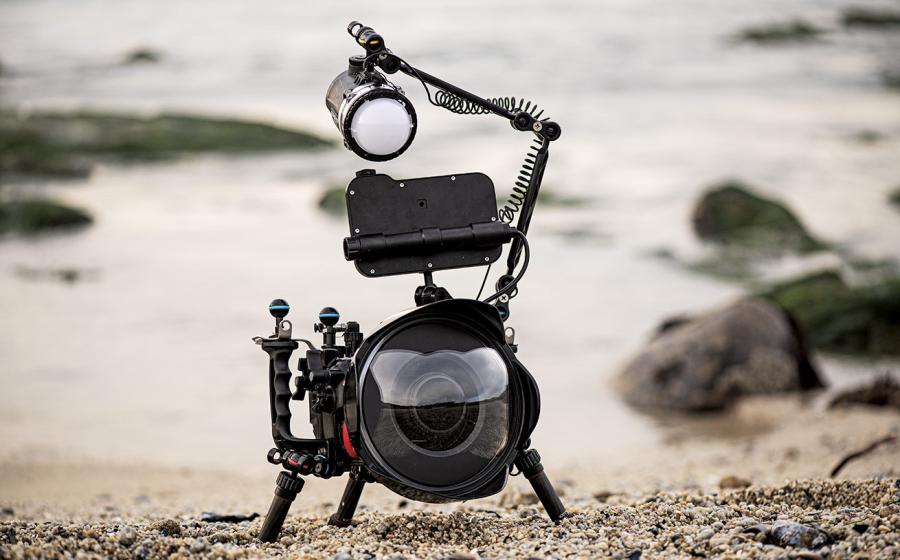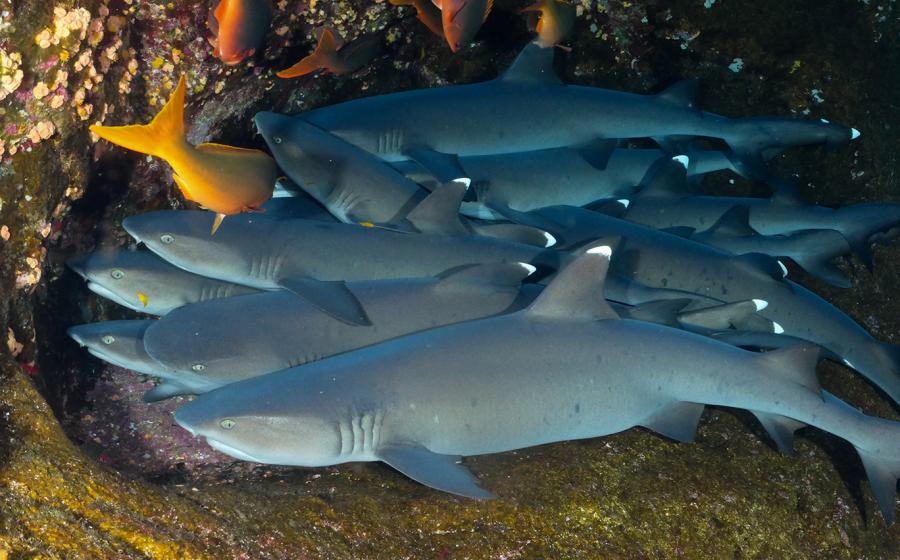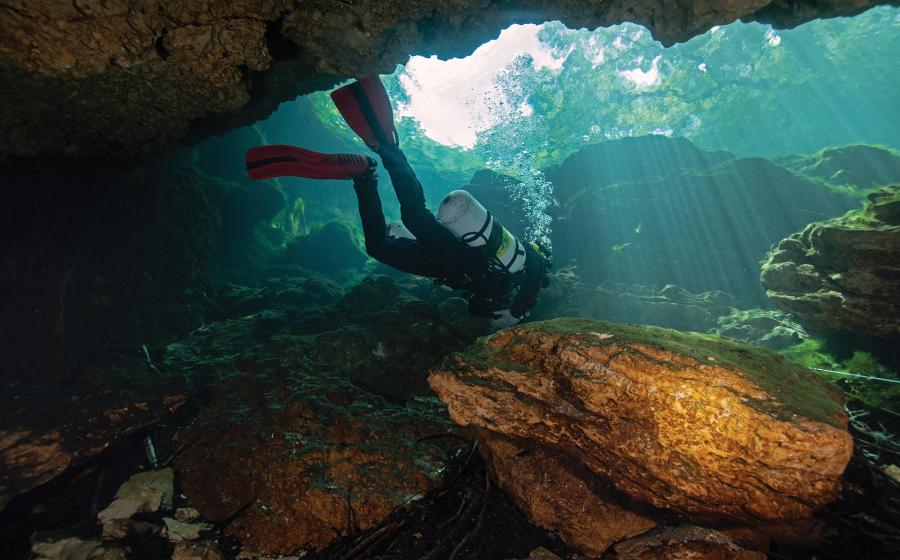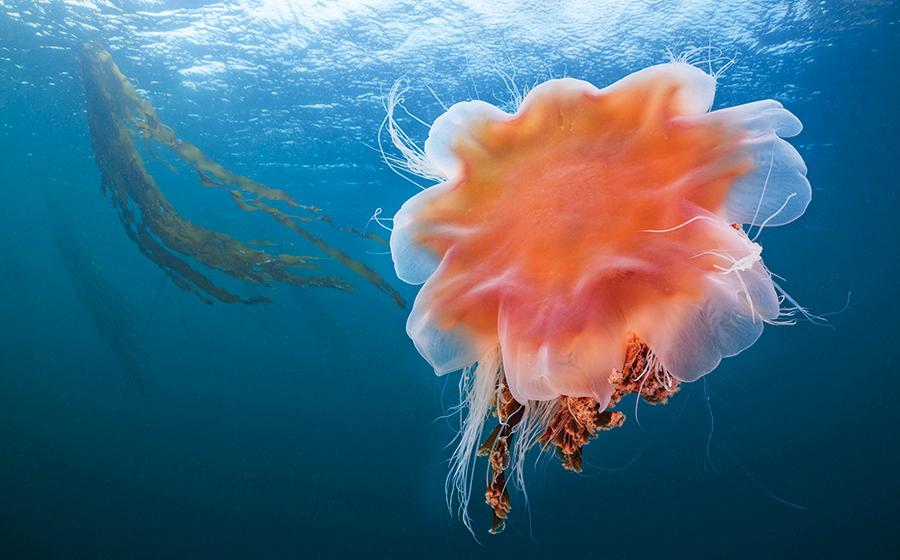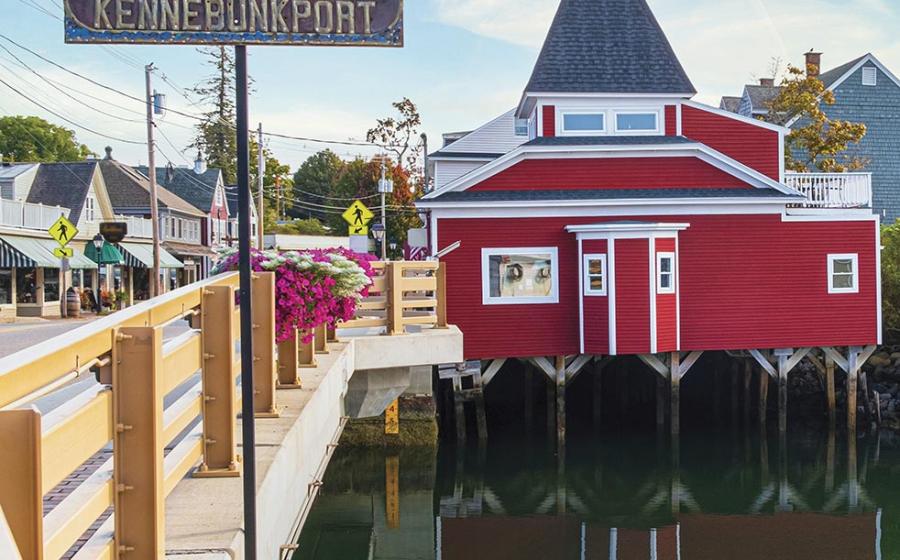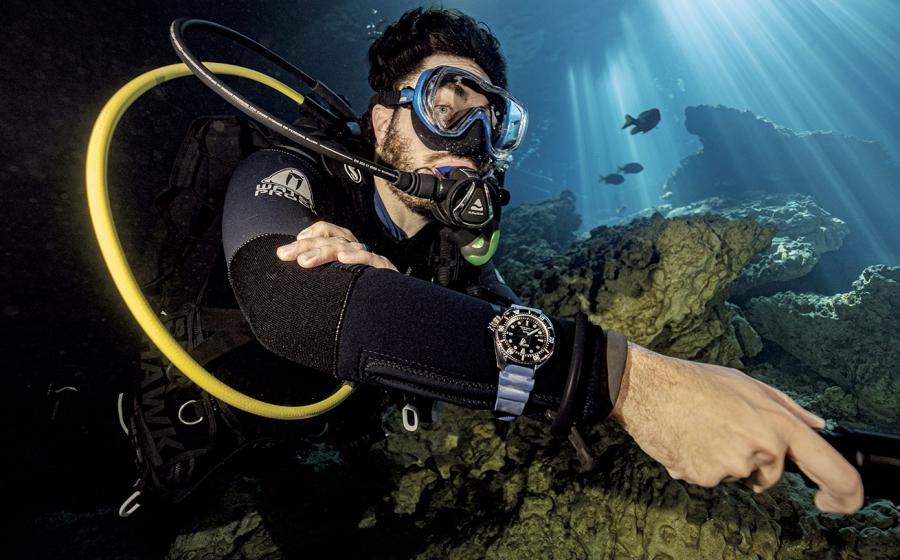Brett Seymour Explores the U.S. National Parks From Below
Brett Seymour landed one of the coolest jobs with the National Park Service by following a childhood dream. Even before he was scuba-certified, he fell in love with the idea of taking underwater photos so those who couldn’t reach such places could share in the wonder. While finishing his senior project for film school, he began volunteering with the team known as the Submerged Cultural Resources Unit, filling tanks and hauling gear. These days, he’s the team’s deputy chief and photographer.
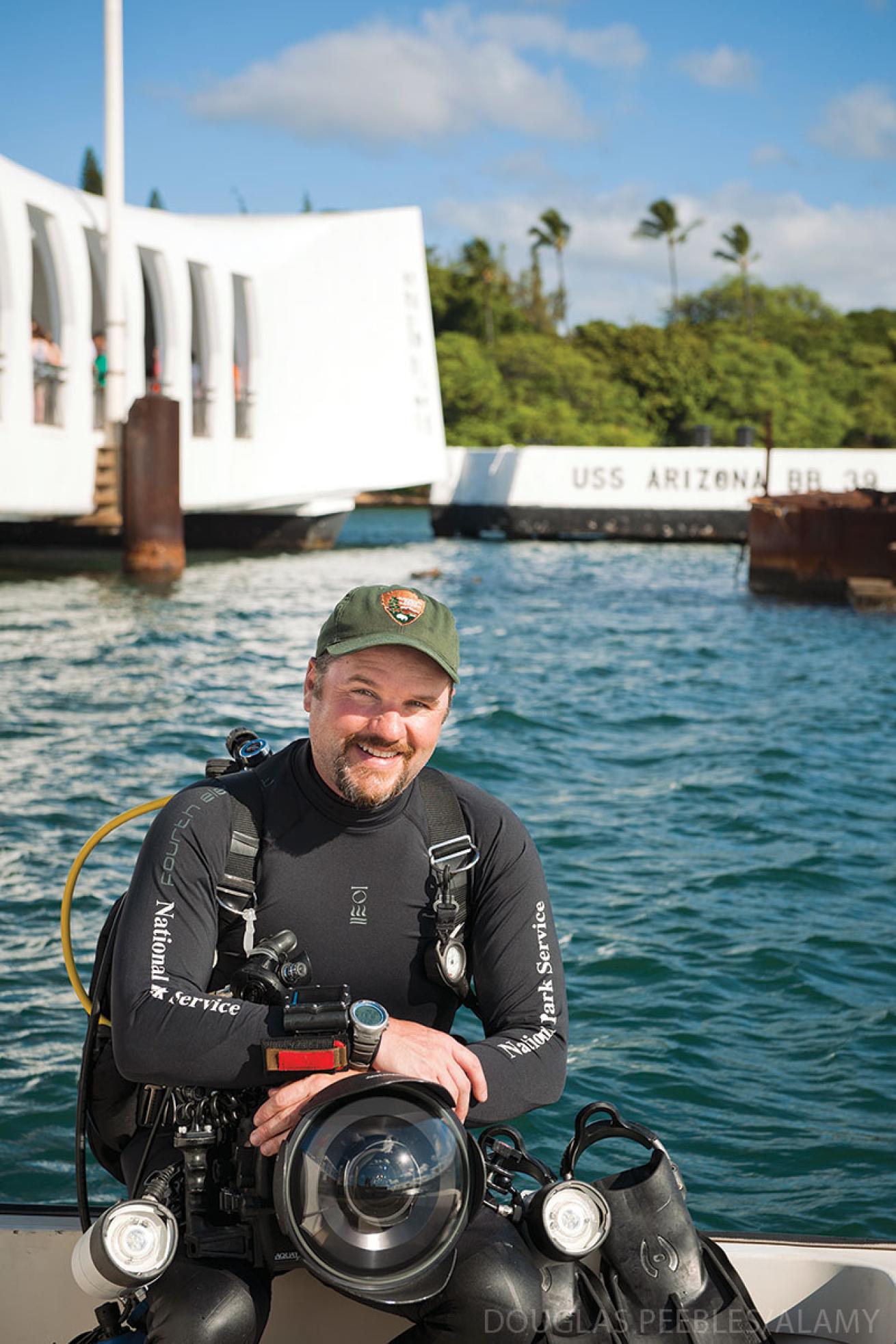
Douglas Peebles/AlamyBrett Seymour has seen iconic sites, like Yellowstone National Park, from an underwater perspective.
Q: What is your team tasked with?
Seymour: The National Park Service has this fantastic mission to protect and preserve all the parks. In the 1970s, the NPS was interested in inundated sites — the dams in the Southwest where all these Native American sites were being flooded. Archaeologists were receiving dive training to study these sites. After that, the park realized it had a cadre of highly trained specialists who could dive. That is where our program originated.
Q: Paint us a picture of what your team does.
Seymour: A classic example is also the project with probably the highest profile, and that’s the USS Arizona (in Hawaii’s Pearl Harbor). The NPS had no idea what was in there. Yes, it’s the Arizona, but does it have live ordnance? What does it look like? With photos and surveys, our office answered those questions in the ’80s.
Q: What would divers find most surprising about the parks?
Seymour: People associate the national parks as places for recreation, where the resources of the natural world are important and worth protecting. What is less known in the public view is that these resources exist underwater. Yellowstone Lake is a great example. The things you see on the surface, like geothermal vents and geysers, occur underwater also, and they’ve been seen by so few people.

Courtesy Brett Seymour/National Parks ServiceExploring U.S. national parks in greater depth.
Q: What’s it like to dive Yellowstone Lake?
Seymour: As with anything, the most remote and hardest-to-reach places are the most preserved. Yellowstone is one of those. It’s not easy to dive. It’s at nearly 8,000 feet in elevation. The water is very cold, especially in spring. The dive sites are not buoyed, but they are there. It’s one of the most unique experiences in the world simply because of the diversity. Some vents release gaseous bubbles. The dormant vents, called spires, are between 10,000 and 13,000 years old, and they’re much like the deep-sea smokers off the Mid-Atlantic Ridge that release black plumes of smoke. Except the ones in Yellowstone have no smoke. But I don’t believe there are examples of spires like this so shallow anywhere else in the world.
Q: What’s been your most rewarding project?
Seymour: My work at Pearl Harbor, which was also the most challenging. People have the misconception that it’s Hawaii, so the viz is fantastic, but the site is in a harbor where it really isn’t. We were trying to image a 608-foot ship in 6- to 8-foot chunks. But that’s what we do. We have a responsibility to tell the story. In the case of Pearl Harbor, a million and a half visitors come every year to pay their respects. But what they don’t realize is that what is most special is how much is still there. It’s not like a Civil War battlefield. The Arizona has shoe soles and shaving kits and cooking pots. Those artifacts are direct links to the human connection.
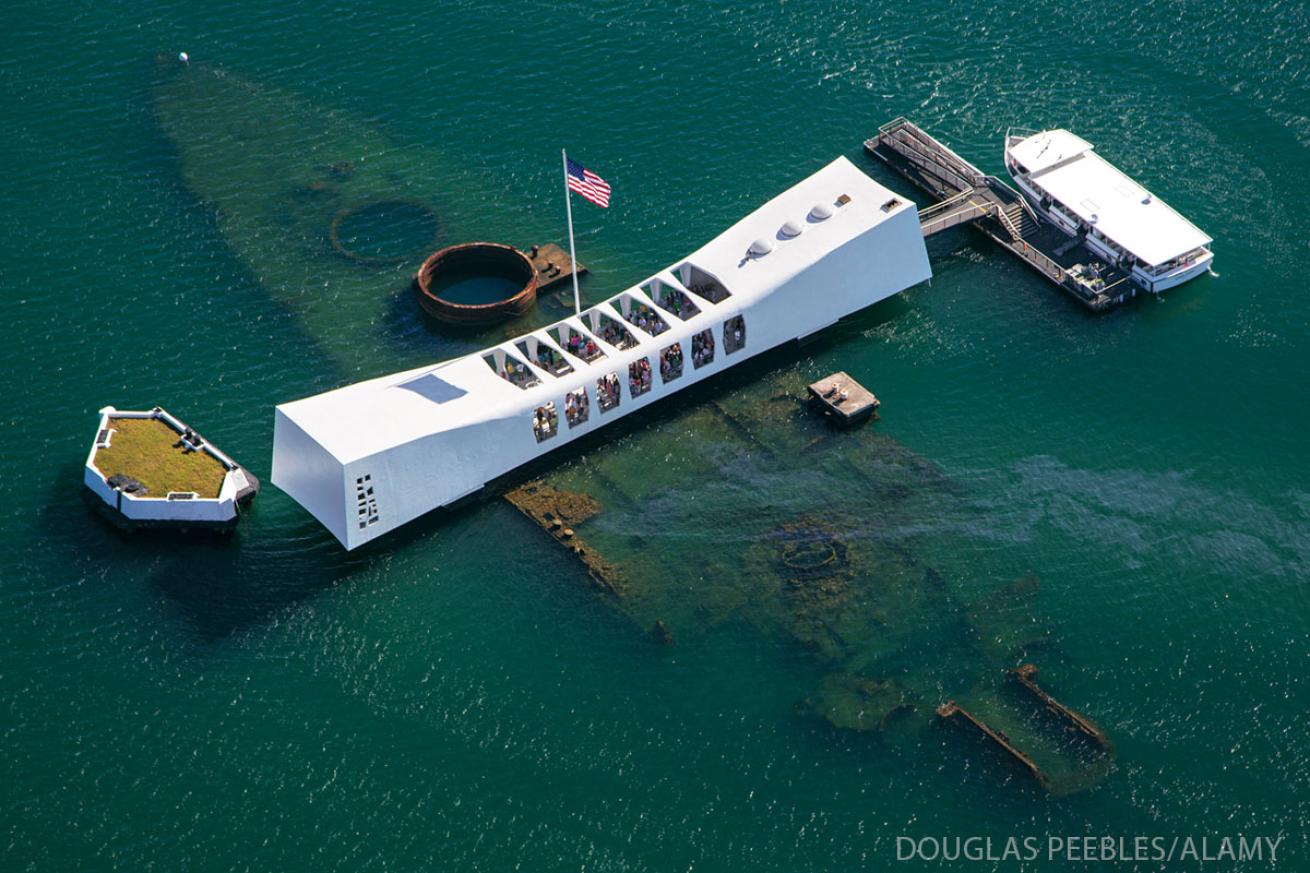
Douglas Peebles/AlamyUSS Arizona
Preserving History On December 7, the U.S., along with other nations worldwide, paused to remember the lives lost during the attack on Pearl Harbor 75 years ago. Brett Seymour and the National Park Service have dedicated much of their professional lives to preserving this memory. Out of respect for those still inside the hull, the NPS does not allow divers to penetrate the wreck of the USS Arizona, but their work includes corrosion studies, oil analyses, and interior investigations via remotely operated vehicles.





